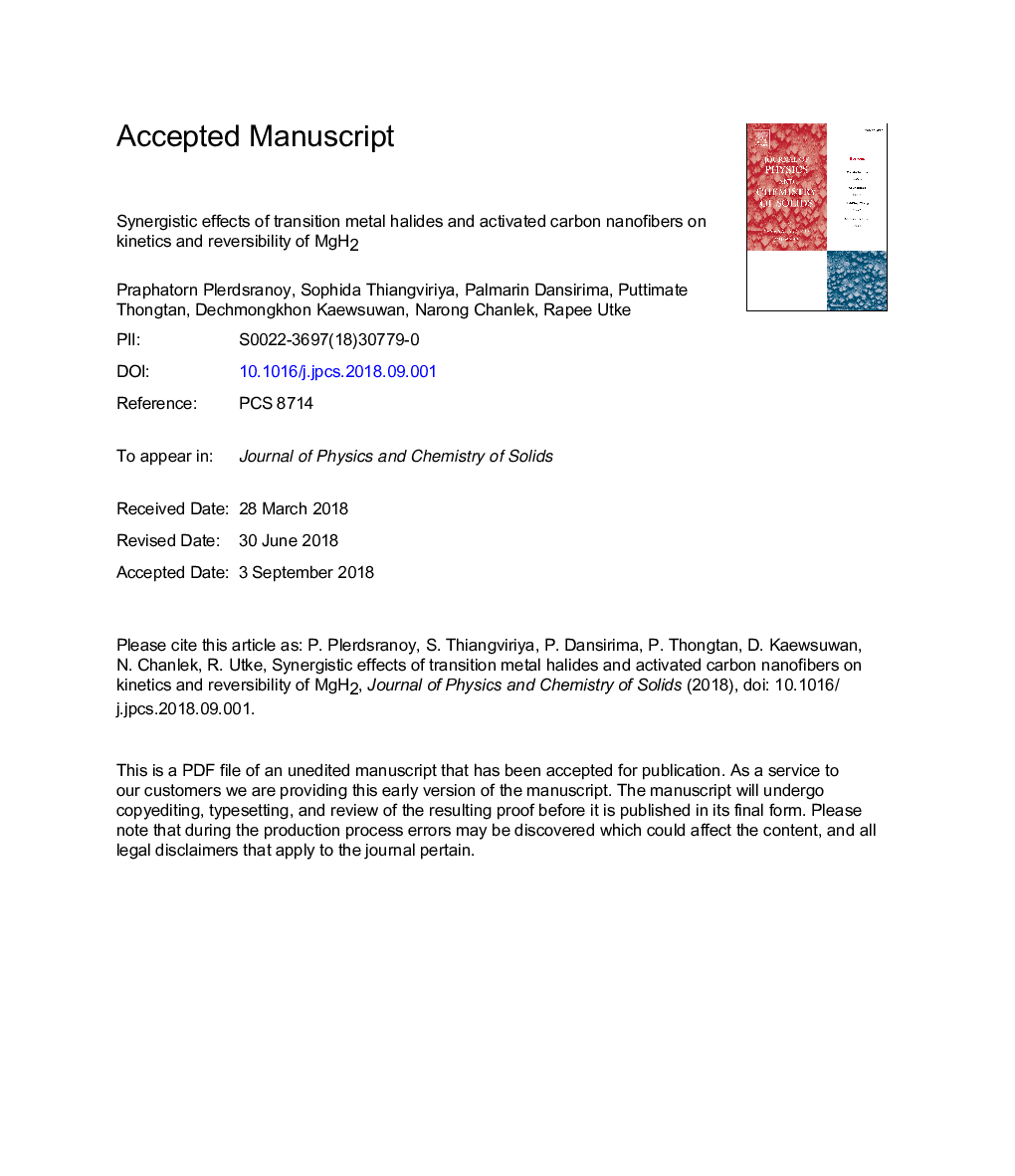| Article ID | Journal | Published Year | Pages | File Type |
|---|---|---|---|---|
| 10141880 | Journal of Physics and Chemistry of Solids | 2019 | 24 Pages |
Abstract
MgH2 doped with transition metal halides (TiF4, NbF5, and ZrCl4) and activated carbon nanofibers (ACNF) for reversible hydrogen storage is prepared by ball milling technique. Transition metal halides provide catalytic effects for de/rehydrogenation kinetics, while ACNF benefits thermal conductivity and hydrogen permeability as well as prevents particle agglomeration during cycling. Significant reduction of onset and main dehydrogenation temperatures of MgH2 (ÎTâ¯=â¯243 and 158â¯Â°C, respectively) are achieved by doping with 5-10â¯wt % of NbF5, ACNF-TiF4 and ACNF-NbF5. During the 1st cycle, the latter samples liberate 4.7-5.0â¯wt % H2 within 1â¯h 30â¯min, whereas MgH2 doped with ACNF reaches only 1.5â¯wt % H2. The reaction between MgF2 and NbHx (xâ¯<â¯1) (MgH2-NbF5 and MgH2-ACNF-NbF5) during dehydrogenation results in the formation of new catalytic active species of Nb-F-Mg favoring kinetics. Upon four hydrogen release and uptake cycles, kinetics and reversibility within 1â¯h 30â¯min of MgH2-ACNF-NbF5 are preserved at 5.0â¯wt % H2, while those of MgH2-NbF5 and MgH2-ACNF-TiF4 decay to 4.4â¯wt % H2. Activation energy (EA) for dehydrogenation of MgH2 considerably decreases from 140.0â¯Â±â¯10.2 to 37.8â¯Â±â¯1.5â¯kJ/mol after doing with ACNF-NbF5. Superior performance of MgH2-ACNF-NbF5 to MgH2-NbF5 is due to synergistic effects of NbF5 and ACNF. In the case of MH2-ACNF-TiF4, the disappearance of active species benefiting kinetic properties and the formation of thermally stable TiH2 account for inferior hydrogen content reversible.
Related Topics
Physical Sciences and Engineering
Materials Science
Electronic, Optical and Magnetic Materials
Authors
Praphatsorn Plerdsranoy, Sophida Thiangviriya, Palmarin Dansirima, Puttimate Thongtan, Dechmongkhon Kaewsuwan, Narong Chanlek, Rapee Utke,
